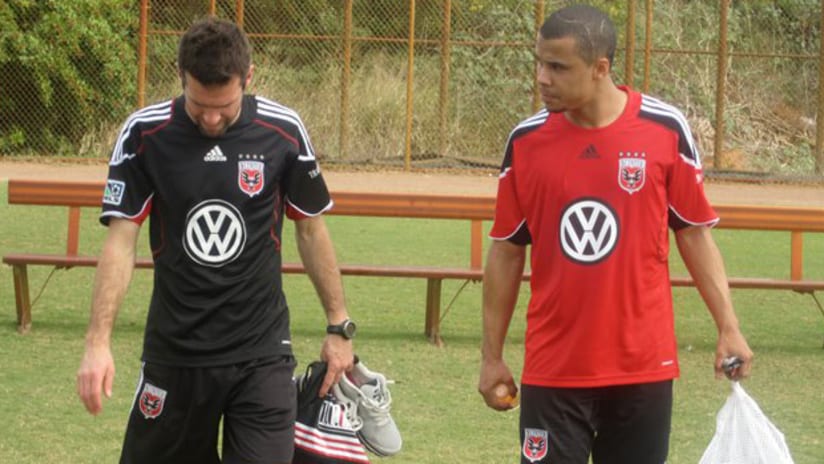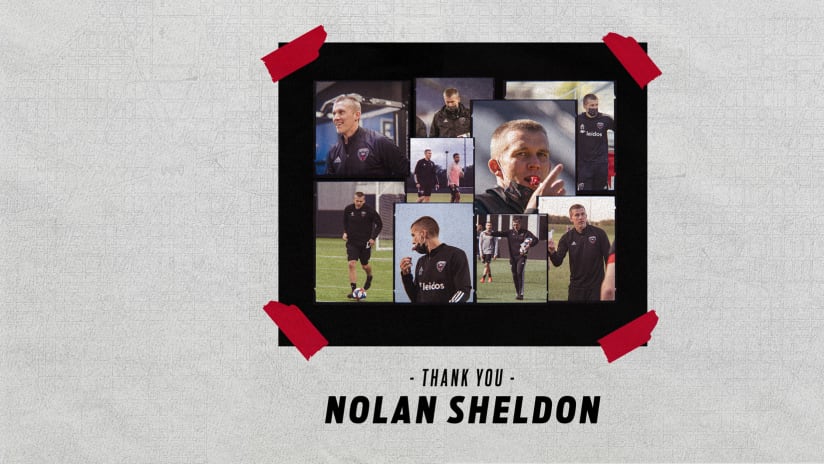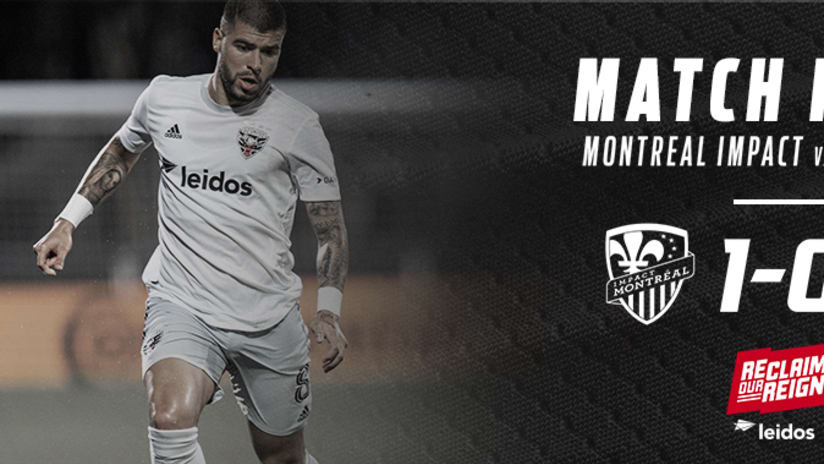Washington is a town built on big talk and big promises, and but there's always an expectation that no matter who’s running the show, the people will get what they want it they simply make enough noise.
And soccer fans in Washington want Charlie Davies. American soccer fans want Charlie Davies. They want the Charlie Davies of 2008, or maybe even the Charlie Davies of 2011. Just as long as the kid who everyone's been openly adoring for two years shows up and does his thing the way we expect him to. The way we think he can.
More importantly – the way we hope he can.
When the news broke earlier this week that Davies was in Washington for a trial and medical, and could potentially play for D.C. United in 2011, an already engrossing saga of talent and turmoil took another dramatic turn. Suddenly the new year has its dominant storyline long before winter even loosens its grip, roughly six weeks before D.C. United open the season.
“As far as on the field, it’s just to show that I’m back as far being physically able to contribute,” Davies said Friday. “And be the player that I was before. So whether that’s using my speed, creating chances, scoring goals. All of the above that I do. That’s just being out there and being the player that I am.”
The inescapable pull to Davies has always been the idea of what he could be. The speed, the flair, the swagger – the elusive American striker who seemingly had it all. We only grabbed a few glimpses, but that was more than enough to appease a fan base that hadn’t seen a US striker score on a big stage since Davies was in junior high.
There were few American players who had fans salivating the way Davies did. He scored against Egypt in the final match of the group stage of the 2009 Confederations Cup in South Africa and, later that fantastic summer, fired a shot to the far post in a World Cup qualifier against Mexico at Azteca Stadium, just the fourth to ever manage the feat. It was the first time the US had ever led in Mexico.
Davies was, even in those brief glimpses, the future. He came from relative anonymity compared to names like Jozy Altidore, Landon Donovan or even Freddy Adu, three players adored by US fans and equally burdened by harsh expectations to someday flip the switch for American soccer.
Davies was the one who came from nowhere. He was the missing ingredient US fans never truly counted on, perhaps a once-in-a-lifetime combination of speed and savvy to counter Altidore’s muscle, creating the ultimate strike partnership that would finally, finally show the world that Americans could actually punch first, not just punch back.
"With the players we have, if things go well,” Davies told L'Equipe in October 2009, “we can win the World Cup."
A Twist of Fate
Then, of course, the story took a horrific and dramatic turn. Davies was severely injured in a car accident that killed a female passenger in October 2009 outside Washington, a collision violent enough to shear the automobile in half and seemingly end Davies’ playing career in an instant.
The accident came in the days leading up to a US national team World Cup qualifying match against Costa Rica at nearby RFK Stadium, a match that will now forever be remembered as the one Davies missed while confined to a hospital bed with, among other things, a shattered right leg, a lacerated bladder and facial fractures.
The Americans trudged on reluctantly without their rising star up top, and the fans at RFK had an equally tough time dealing with the news. They raised placards honoring Davies’ No. 9 jersey in his honor (the moniker "CD9" is enough to describe Davies now), a makeshift way to pay tribute to a talent who was seemingly gone as fast as he had arrived.
“I just couldn't get my mind off of it, you know what I mean?” Altidore said after the game. “It is unbelievable to think how your life can change in one night, in one minute, in one second. It was tough to swallow for me. I played like he was out there with me tonight."
The story that played out in the following nine months was the stuff of a Hollywood drama. Soccer supporters and sports fans who couldn’t care less about US-Mexico a year before were suddenly drawn to Davies, the can-do kid who everyone was sure would summon the spirit and strength to overcome the obstacles in front of him.
And that time span – which included Davies’ ambitious announcement on ESPN that yes, he would be fit enough for the World Cup – appealed to every sentimental bone in Americans’ bodies. There was an uncanny desire for soccer supporters and casual sports fans to impatiently latch onto his recovery, clamoring for anything we could get.
An interview? A photo of him standing? Maybe even walking? Did you hear the quote from US coach Bob Bradley? People took what was out there, sent the link onto friends and asked if they’d heard about Davies, and was he going to play in the World Cup?
More than a few fans cursed Davies’ French club Sochaux when they finally anounced that no, Davies wasn’t fit or healthy enough to contribute. That he wouldn’t see any minutes in the months ahead of last summer’s World Cup, and that it was even unlikely Davies would play for the first team again.
And more than a few fans raised an eyebrow over Bradley’s move to take Edson Buddle and Herculez Gomez, both veterans but unproven at the international stage, to the World Cup while Davies stayed home. Robbie Findley got the start against England in what certainly has to be one of the proudest moments of his life, but all we would think about was if the US could have won with Davies.
A Fresh Start
Passed on by Bradley and seemingly forever shelved by Sochaux, Davies’ quest to come back has taken him to Washington, where a passionate but pragmatic coach is willing to take a shot. Ben Olsen played with Davies during the 2007 Copa América tournament in Venezuela and said this week that, “I love Charlie,” praising Davies’ talent and his temperament, and patiently reasserting that if healthy, he can contribute to a DC team in flux and in need.
“It’s no different than any other trialist,” Olsen said Friday. “We’ll evaluate him physically, mentally, tactically and all the things we look for in players. We’ll see. It’s early days with this whole deal. But we’re very happy to have him and looking forward to his stint here.”
The fans, meanwhile, have been less reserved.
“I'm an LA fan but I want this to happen,” Hunter Pages posted on MLSsoccer.com this week. “Can’t wait to see what Charlie's got in him now.”
JOIN OLSEN'S ARMY!
Get your tickets now!
Said Kristopher K. Bunch: “Would love to see CD9 in MLS, no matter what team he goes to. It is good for the league, US soccer and for him.”
What do we know about Davies now? Very little. There is an amazingly intense focus on what Davies can possibly do in 2011, nearly two years removed from that lightning-in-a-bottle summer. Don’t forget, he hasn’t played a full competitive match since President Obama was in his first year on the job. That alone is a daunting task for a completely healthy player, let alone one who people wondered would die after his car slammed into a guardrail.
Davies worked out for the first time with DC on Thursday and the media understandably swarmed on Friday, all eager to hear if the old Charlie Davies was still in there somewhere, behind the sobering and unmistakable scars that now wind along his scalp and up and down his right leg. But nobody can say for sure, yet.
The story perhaps better suited for Hollywood will now draw a fixed gaze to Washington just the same, with CD9 supporters and gawkers alike wondering which Charlie Davies is about to show up.
“For me, it’s just getting on the field and proving myself,” Davies said. “Just showing that I’m back.”





